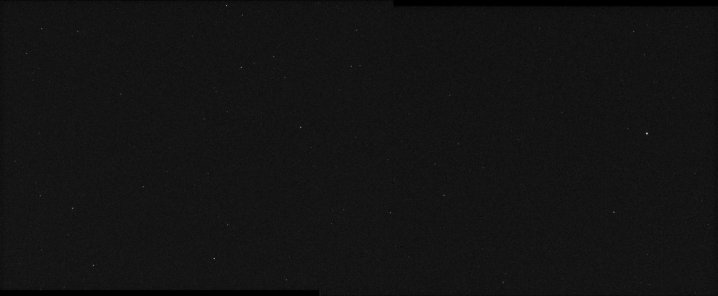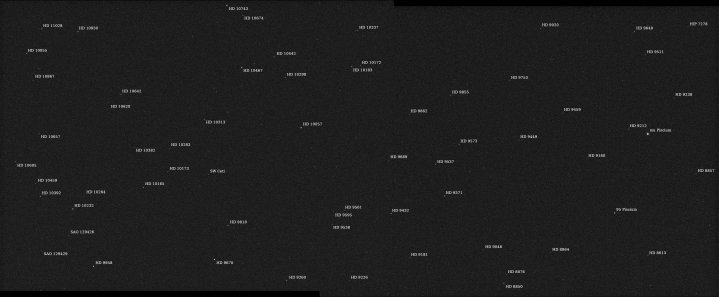NASA has shared the first images taken by its Psyche mission, which launched in October to study a strange metal asteroid located in the main belt between Mars and Jupiter. The spacecraft, which is still on its long journey, is expected to make its arrival at the asteroid in 2029 and is currently between the orbits of Earth and Mars. But it is already testing out its instruments by taking a test image using its two cameras and sending it back to Earth, in a process called first light.
The image captured by Psyche’s cameras shows a field of stars in the constellation Pisces. It is a mosaic made from the total of 68 images taken by the two cameras, with its first camera Imager A taking images for the left side and its second camera imager B taking images for the right side.

This region wasn’t chosen for any particular scientific interest, rather it was a test of the cameras when they happened to be pointing in this particular direction. There aren’t many bright stars in this area, but there are still many that are identifiable and have been labeled on the annotated version of the image below:

“These initial images are only a curtain opener,” said Psyche imager instrument lead Jim Bell of Arizona State University in a statement. “For the team that designed and operates this sophisticated instrument, first light is a thrill. We start checking out the cameras with star images like these, then in 2026, we’ll take test images of Mars during the spacecraft’s flyby. And finally, in 2029 we’ll get our most exciting images yet – of our target asteroid Psyche. We look forward to sharing all of these visuals with the public.”
The Psyche mission has already made another milestone in its journey, as it recently tried out a laser communications test called Deep Space Optical Communications, or DSOC. The DSOC experiment is riding along with Psyche to test out whether laser communications can be used on deep space missions, as it has the potential to provide bandwidths up to 100 times greater than the radio frequency communication systems that are currently used.



